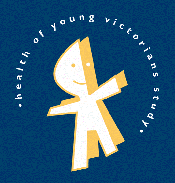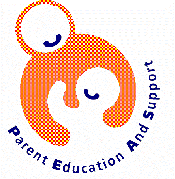Outcomes & Complications
Outcomes and complications of child and adolescent obesity
The Outcomes and Complications Stream has COMPLETED its work, however information is retained here on this site for reference.
How will obesity affect the physical and psychological well-being of children in coming decades? What effects will childhood obesity have on life expectancy, the national economy, and our society? *1
The Outcomes & Complications stream wants to promote research across Australasia that can rapidly address these vital questions. We aim to:
Publicise Australasian longitudinal obesity studies via the ACAORN website
Support data pooling from Australasian longitudinal studies to address priority research questions
Promote uniform definitions of core outcome and complication constructs
Work with other networks *3 and professional groups across the laboratory-clinical-community-population research spectrum to achieve the above aims.
Stream members have jointly prioritized the following questions:
Within overweight/obese groups:
What factors predict relative BMI reduction over time?
What factors predict comorbidities?
What is the relationship between sleep parameters (quantity and quality) and change in adiposity over time?
Within populations *2:
What are the modifiable environmental risk/protective factors for childhood obesity, and at what ages do they start making their impact felt?
What parental and family factors influence the future development of obesity in the child?
What are the longitudinal relationships between the development of obesity and physical, social and mental health?
What prenatal and early childhood patterns of growth and nutrition predispose to later obesity?
What prenatal and early childhood patterns of growth and nutrition predispose to later obesity?
Secular trends in incidence of overweight/obesity during the period 1970 – 2010
*1 Ludwig DS. Childhood obesity–the shape of things to come. New England Journal of Medicine 2007;357(23):2325-7
*2 Byrne S, Wake M, Blumberg D, Dibley M. Identifying priority areas for longitudinal research in childhood obesity: Delphi technique survey. International Journal of Pediatric Obesity 2008:3 (2):120-122
*3 eg Other networks include, for example, the ACAORN Network of Tertiary Obesity Clinics, the Australian Paediatricians’ Research Network, and the Network in Genes and Environment in Development
Australasian longitudinal studies on child and adolescent obesity
Health of Young Victorians Study (HOYVS)
PEAS: Kids Growth Study
The Nepean Study
GADS
FLAME study
Growing Up in Australia
Health of Young Victorians Study (HOYVS)
Formal study name: Health of Young Victorians Study
Web link: http://www.rch.org.au/ccch/research.cfm?doc_id=10640
Number of waves: 3
HOYVS has studied obesity and health-related quality of life in school children in 1997, 2000 and 2005. The latest wave (HOYVS 2005) is providing information about how young people’s physical growth, health and well-being change between childhood and adolescence, and factors that may influence this.
Contact: Megan Mathers; Melissa Wake
PEAS Kids Growth Study
Formal study name: PEAS Kids Growth Study
Web link: http://www.rch.org.au/ccch/research.cfm?doc_id=10664
Number of waves: 13
The PEAS Kids Growth Study has measured the growth of more than 300 children since birth. It is studying how different patterns of growth and body composition affect children’s chances of staying at a healthy weight. It’s also interested in early life predictors, such as parental weight status, social factors, pre- and postnatal smoking, nutrition and physical activity.
Contact: Melissa Wake; Michele Campbell; Jo Williams
The Nepean Study
Formal study name: The Nepean Longitudinal Study
Number of waves: 5
The Nepean Longitudinal Study is a prospective study which has been designed to explore foetal and mid-childhood influences, including family and home environment, on body composition, including bone, and metabolic risk in a contemporary Australian adolescence.
Contact: Sarah Garnett
GADS
Formal study name: Childhood Growth and Development Study
Number of waves: 7
Investigating the biological, psychological and social factors related to the development and persistence of childhood obesity.
Contact: Susan Byrne, Felicity Watt
FLAME study
Formal study name: FLAME study
Number of waves: 8
Focuses on family habits that might predict development of overweight at 7 years.
Contact: Barry Taylor; Shirley Jones
Growing Up in Australia
Formal study name: Longitudinal Study of Australian Children
Web link: http://www.aifs.gov.au/growingup/
Number of waves: 8
Growing Up in Australia is the biggest ongoing national study of children ever mounted in Australia – following 10,000 children recruited as babies and preschoolers in 2004. At every wave, children have been weighed and measured, and data collected on activity and nutrition patterns. It has already led to a number of publications on childhood obesity. Its wealth of data is available to all researchers – access instructions are on the study’s website.
Contact: Matthew Gray; Linda Bencic
Outcomes and complications of child and adolescent obesity - Stream publications
Byrne S, Wake M, Blumberg D, Dibley M. Identifying priority areas for longitudinal research in childhood obesity: Delphi technique survey. Int J Pediatr Obes. 2008; 3(2):120-2. Abstract.



